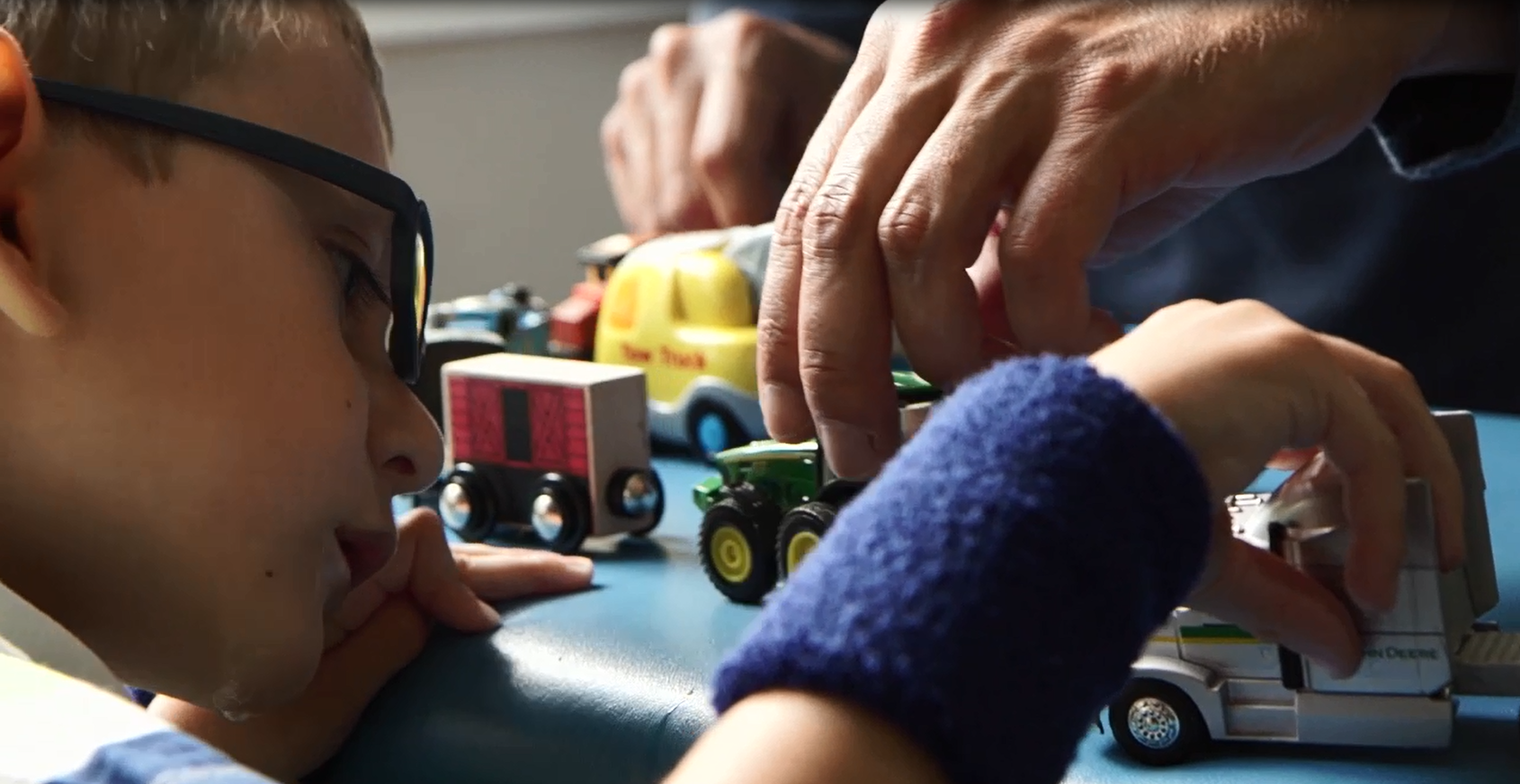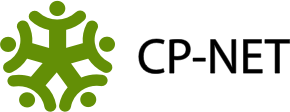Clinical Database Platform (2013-2018)
Platform Leader: Darcy Fehlings

The largest component of CP-NET (Past and Future) is the Clinical Databases. Clinicians from 9 clinical sites from across Ontario are recruiting children with CP and acquiring a large database of information about clinical risk factors, neuroimaging, genetics, neurodevelopmental factors as well as the psychosocial and participation dimensions of children’s lives.
A comprehensive CP-NET clinical database will allow researchers to study a variety of risk factors for CP, such as clinical risk factors occurring before, during and after childbirth. This data will be collected by conducting a detailed review of the child’s neonatal, medical and rehabilitation charts, along with maternal medical and obstetrical records. Other variables evaluated will include socio-demographic information, family history as well as diagnostic data. Clinically acquired imaging data from fMRIs will be obtained and will be read, classified, and coded to create a neuroimaging database. It is hoped that the information collected will support current and future CP-NET research questions and themes.
Data analysis is currently in process - please check back for updates.
Genomics
Leader: Stephen Scherer
Team Members: Andrew Paterson, Richard Wintle, Melissa Carter & Darcy Fehlings
There is mounting evidence that CP is the result of both genetic and environmental factors. Investigating the roles genetics play is crucial to our understanding of the complexity of CP, and may lead to improved interventions for preventing CP, and better diagnostics and treatments for these children and their families.
CP-NET’s Genomic Platform will consist of three projects (described below):
- completing the CP-NET Hemiplegic CP Pedigree case study project;
- creating a DNA database for all sub-types of CP; and
- a collaborative hemiplegic CP Genomics Project.
Project 1: CP-NET Hemiplegic Pedigree Case Study
This project hopes to create a database of the genetic material (called DNA) present in 350 youth with hemiplegic CP. The DNA will be taken by collecting saliva samples. Once collected the DNA will be used to create a hemiplegic CP-NET DNA database. Once established, this database will be used to look at genetic mutations that are involved in the development, progression and symptoms of CP. Some families, with another family member with CP, a family history of stroke or heart attack before the age of 55 years, or parents, who are biologically related, will have a more detailed analysis of multiple family members. This is done to see if there is a way to determine the risk of a family having a child with hemiplegic CP. If we are able to identify which families are genetically at risk, we can provide them with genetic counseling, closer clinical monitoring and tailor clinical practice to reduce the risk of CP.
Project 2: CP-NET DNA Database for all sub-types of CP
This project involves the creation of a new population-based database. Saliva will be collected from youth with CP, and their parents. If additional genetic risk factors are identified (such as family history of cardiovascular disease or neurodevelopmental disorders) then saliva and clinical data of siblings will also be collected. This data will be used to test future hypotheses about genetic factors and the gene-environment interactions that are associated with CP.
Project 3: Collaborative Hemiplegic CP Genomics Project
This project will result in the largest collection of subjects with hemiplegic CP in the world. In collaboration with the Children’s Hospital of Philadelphia and the Canadian CP Registry of Canada’s NeuroDevNet, CP-NET will compare over 200 genomes of individuals with hemiplegic CP to their parents and typically developing peers. This will allow scientists to determine rare and common genes that can lead to hemiplegic CP.
Clinical Risk Factors
Leaders: Darcy Fehlings, Ronit Mesterman, Craig Campbell, Dawa Samdup & Anna McCormick
Team Members: Anne Kawamura, Marie Kim, Carolyn Hunt, Jan Willem Gorter, Pamela Frid & Sean Murray
Data on clinically relevant risk factors is being collected through a detailed review of maternal medical and obstetrical records together with the child's neonatal, medical and rehabilitation charts, and supplemented by parent interviews. Some types of variables captured include family history, maternal age, type of delivery, infant gender, birth weight, gestational age, among many others.
The comprehensive nature of the registry's database will provide the opportunity to evaluate a large number of risk variables for CP, and the insight gained will support current and future CP-NET research questions and themes.
Neuroimaging
Leaders: Gabrielle deVeber
Team Members: Manohar Shroff, Darcy Fehlings, Stephen Strother & Charles Raybaud
Neuroimaging Database
As it is routine procedure, an estimated 80% of CPNET participants have brain imaging. These brain images can be in the form of MRI, CT or ultrasound images. These images will be read, coded and standardized. Researchers will classify what the injury looks like (pattern on the brain) and when the injury happened (developmental stage) from a participants neuroimages.
Taken together this information helps classify how the injury associated with CP happened (neuropathology) in each participant. CPNET researchers, using the neuroimaging and clinical information, will work to correlate the lesion characteristics with the type of cerebral palsy and the associated challenges. A focus of this platform is to develop a classification system for the different types of neuropathology phenotypes, as no reliable and valid classification system currently exists.
NeuroDevelopmental Focus
Leaders: Anne Kawamura, Ronit Mesterman & Darcy Fehlings
Team Members: Marie Kim, Carolyn Hunt, Jan Willem Gorter, Dawa Samdup, Craig Campbell, Pamela Frid, Nancy Young, Sean Murray & Anna McCormick
We know that children with CP have an injury to their brain that affects their ability to use their arms and/or legs. This injury can also affect the child’s language, cognition, emotional and behavioural functioning. Little is known about the connections between where in the brain the injury occurred, what the injury looks like (pattern on the brain) and when the injury happened (developmental stage), and a child’s developmental outcomes. The goal of this component of the research program is to assess the development of children with CP by looking at their language, cognition, behaviour, health and motor skills, the most common issues that affect the developmental trajectories of these children.
By building these profiles of developmental outcomes and linking them to brain injury patterns, we hope to be able to predict the probable course and outcome of children with CP. Being able to predict these patterns of developmental is important for planning and providing the most appropriate types of rehabilitation and care for these children with CP.
Psychosocial and Participation Dimensions of Children’s Lives
Leaders: Darcy Fehlings, Nancy Young
Team Members: Anne Kawamura, Marie Kim, Carolyn Hunt, Ronit Mesterman, Jan Willem Gorter, Dawa Samdup, Craig Campbell, Pamela Frid, Sean Murray & Anna McCormick
Children with CP have fewer social contacts and that they may experience limitations to participation in everyday activities due to environmental barriers. This component of the research program will investigate various aspects of a child’s psychological and social development, including: child health related quality of life, self-esteem and family quality of life. In addition, the child’s behavior, sleep, and participation at home, in the community and at school will also be measured. This will assist in informing family centred health care, by informing strategies to promote mental health, wellness and community engagement among individuals with CP.
